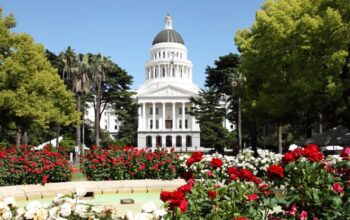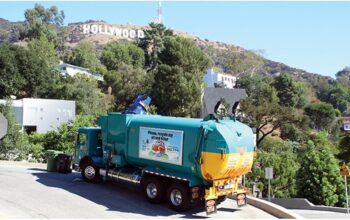Newsom is a liar. He proclaims we have a housing shortage, but for decades a housing project has been on the books in the Tejon Pass, between L.A. and Kern counties. Yet lawsuits, government interventions, change in environmental laws, housing regulations, etc. have kept this project from being built. If completed, 15 years ago, the housing would have helped our lack of homes in California—and been much cheaper. Now Newsome is silent about this and dozens of other housing projects, but demands billions be spent by government on housing for the poor and middle class, folks he and Democrat policies have harmed for two generations.
“When you’re driving north from Los Angeles, just before the 5 Freeway drops into the Central Valley, the 270,000-acre Tejon Ranch property is clearly visible to the east, miles of rippling grasslands that bleach to a crisp golden-blond in summer. For decades, the owners of this property that straddles Los Angeles and Kern Counties have attempted to build a residential development 70 miles from downtown Los Angeles: a 6,000-acre, 20,000-home master-planned community named Centennial. Earlier this month, however, an L.A. County judge essentially blocked the development after a lawsuit challenged the developer’s environmental-impact report, claiming it didn’t accurately consider wildfire risk or greenhouse-gas emissions. Although the ruling doesn’t stop the development outright, it will make it significantly harder for the project to move forward without major changes, says Bryn Lindblad, deputy director of the nonprofit Climate Resolve, which filed the lawsuit. “It’s a chance for Tejon Ranch to take pause, to do some existential soul-searching, and decide which side of history they want to be on.”
Why Recall Newsom? Because of his duplicity on housing—he wants GOVERNMENT controlled housing, not private sector housing.
Climate-Change-Related Lawsuit Nixes Huge California Development

By Alissa Walker, Curbed, 4/22/21
When you’re driving north from Los Angeles, just before the 5 Freeway drops into the Central Valley, the 270,000-acre Tejon Ranch property is clearly visible to the east, miles of rippling grasslands that bleach to a crisp golden-blond in summer. For decades, the owners of this property that straddles Los Angeles and Kern Counties have attempted to build a residential development 70 miles from downtown Los Angeles: a 6,000-acre, 20,000-home master-planned community named Centennial. Earlier this month, however, an L.A. County judge essentially blocked the development after a lawsuit challenged the developer’s environmental-impact report, claiming it didn’t accurately consider wildfire risk or greenhouse-gas emissions. Although the ruling doesn’t stop the development outright, it will make it significantly harder for the project to move forward without major changes, says Bryn Lindblad, deputy director of the nonprofit Climate Resolve, which filed the lawsuit. “It’s a chance for Tejon Ranch to take pause, to do some existential soul-searching, and decide which side of history they want to be on.”
At first glance, a development like Centennial sounds like the ideal antidote to California’s housing woes. Here’s a developer offering to contribute 20,000 homes to the region’s shortfall — 18 percent of which would be designated affordable — on what is currently the largest piece of private property in California. But Tejon Ranch is an especially egregious place to put a brand-new mini-city. Here in the foothills, the risk of wildfire is already very high, and adding humans makes a spark more likely, meaning the state will be forced to mount a costly defense of people and property. And then there’s the challenge of supporting 60,000 people essentially in the middle of nowhere — at least 30 miles from any major job centers or public transit — along with all the cars needed to haul them around and maintain their daily lives. These arguments in the lawsuit from Climate Resolve — which sued successfully to stop a freeway from being built in the nearby High Desert — are the latest in a quarter-century saga of legal attempts to prevent development at Tejon Ranch. In fact, a decade ago, anticipating such a battle over Centennial, the developers at Tejon Ranch had already brokered a deal with various environmental groups that agreed not to fight if the vast majority of the property remained untouched. Yet, despite all the red flags, L.A.’s Board of County Supervisors had unanimously approved the Centennial development in 2018.
Although the potential catastrophe of a wildfire is reason enough to shut down Tejon Ranch’s development, it’s the slow-motion daily disaster of the exurban lifestyle that’s the real climate risk. And that part of the judge’s decision might be setting an even more significant precedent. Reducing transportation emissions — which make up one-third of the state’s total greenhouse-gas emissions — is, supposedly, one of California’s major climate priorities. The state has passed several laws meant to incentivize developments that reduce vehicle trips, although a recent 13-year survey showed that emissions did not decline as a result of these policies and the number of vehicular trips actually increased. The California Environmental Quality Act, known as CEQA, triggers an environmental review of large projects where developers are required to show how greenhouse gases would be reduced, but in this case the developer erroneously claimed that vehicular emissions would be covered under the state’s cap-and-trade program, which they are not. The Tejon Ranch ruling demonstrates that developers can no longer ambiguously say they’ll reduce or offset transportation emissions, but have to take demonstrable concrete actions to eliminate those emissions at the source. “If it went the other way, it would mean making CEQA’s requirement to mitigate significant greenhouse-gas impacts virtually meaningless,” says David Weiskopf, senior policy advisor at NextGen Policy, a nonprofit focused on confronting environmental, social, racial, and economic inequities in California. “So it is extremely important that the court rejected the developer’s argument.”
The judge’s decision comes as the state emerges from its third-driest winter on record, following its most destructive fire season in history. In fact, earlier this month, the governor’s office effectively acknowledged that “fire season” is no longer a season at all but simply occurs year-round. It’s clear that urgent statewide policy is needed to not only stop people from living in these high-risk areas, but also to relocate people who already live in the most dangerous places. That hasn’t happened yet, says Char Miller, director of environmental analysis at Pomona College in Claremont, California. “It’s maddening,” he says. “After the various Napa fires of the last few years, they just keep building in the same old places. What are they thinking?” Miller can think of just two other instances from the past several years where residential developments proposed in “high severity” zones of California’s wildland-urban interface have been stopped — but only after state intervention, when California’s former attorney general Xavier Becerra (who is now secretary of health and human services in the Biden administration), stepped in to cancel them. “This is telling you the counties aren’t doing their job,” he says. “And it’s the judiciary that is making a smarter decision than the county supervisors who have decided to ignore this issue.”
Fortunately, solutions to reducing both vehicle emissions and wildfire risk are essentially the same. They would include banning housing in the highest-severity fire zones and beefing up incentives to build denser developments near existing transit — a proposed bill, SB-55, would do exactly this — plus buying up fire-prone land around cities to protect existing homes, says Miller. “This way, we keep people out of harm’s way and get more open space, which is also a public good.” Both of these things might seem like pricier investments at the moment, he says, but will end up saving money and lives in the long run. Now, the ball is really in the court of L.A. County’s five supervisors, who have a remarkable opportunity before them to truly listen to the experts and change their approach to development both in the most populous county in the country and across California. “I hope this ruling is the light-bulb, a-ha moment for developers,” says Lindblad. “The tide has turned. Irresponsible development can no longer be the norm.”



